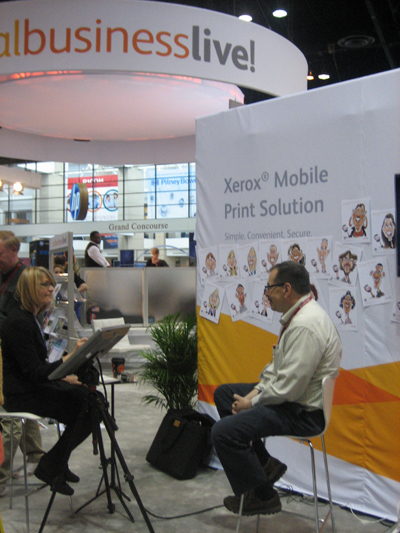“My message to you is that we’re in a digital world, and that cell phone, that mobile device has become an appendage just like your hand…. It’s time for service providers to listen, learn and take advantage of mobile technologies.”
That was how Barb Pellow, Infotrends Group Director, kicked off the 2015 Xerox Business Development Webinar Series, “Mobile on the Move.” Pellow led the session, joined by two print and marketing services providers, Mark Serbin, president, Serbin Print Marketing and Publishing, Sarasota, Fla., and Jeroen van Druenen, director, Jubels b.v., Amsterdam, the Netherlands.

Mobile devices have become the primary means for linking the digital and physical worlds, Pellow said, and mobile activators—such as mobile barcodes, near field communications (NFC) tags and augmented reality (AR)—bring additional value to print. That value includes 100-percent trackable results for mobile campaign components and higher response rates. Pellow cited a recent study, which found that print marketing campaign results increased by 27 percent when the Web or email were added, by 37 percent when both were added, and by 45 percent when mobile was added to that.1
Here are excerpts from Pellow’s interactive discussion with the two marketing services providers.
Q: Why is mobile important to your business?
Serbin: We see continued proof that integrated campaigns with mobile and cross channel communication give our customers better ROI and response rates. That makes them happy—and us happy—so it feeds on itself.
van Druenen: It closes the gap between online and offline, and makes print more relevant, and it’s happening right now. You need to have mobile capabilities.
Q: What skills are required? Did you need to add any skills or retool the staff?
Serbin: It’s all variable data work, so we got more involved and had more training in all XMPie has to offer, such as QR Codes and maps. We have four full-time graphic artists who are extremely capable in InDesign, a mail department that does most of our data work, and one person who runs our digital department and maps the data to pre-press so it all comes together. We’re in a learning stage, learning to present better solutions to our customers.
van Druenen: It starts with people who enjoy their work and are interested in what they can do with the new technologies like personalized QR Codes and Google Maps navigation. You need to give your staff time to deep dive into the programs so they can explore and find fun and interesting things. And you want your sales team to ask them, can we do this, can we do that? Then they work together to develop solutions, which is a key factor for success.
Q: Are you getting any requests to link AR or QR Codes to video? What are the implications for the future?
van Druenen: You need to have video skills, and we don’t. We buy them, and they are too expensive for a normal direct marketing piece. But if the offer has large volume or value potential, it can make sense.
Q: How do you deal with instant messages, and texting and What’s App?
van Druenen: We use text messaging and would love to use What’s App and messaging from Facebook. These are impressive extra channels you can use to get to the customer.
Q: Where is mobile taking you?
Serbin: To the top in our marketplace, really and truly. It’s separating us from other commercial printers.
“If you are a service provider today, change isn’t going away, it’s accelerating,” Pellow concluded. “It’s about getting that customer into a conversation, not just a campaign…It’s not one media or another type, but synergistically using that media, and its about real-time, now communications in a world where every customer is tuned in and turned on a with mobile device.”
To hear a replay of the webinar, click here. Also, be sure to sign up for the next session in the Xerox Business Development Webinar Series, a June 10 session on “Packaging: Service Providers Helping Build Brands.”
How does mobile fit into your service offerings?
—
1 From “Understanding Vertical Markets: Enterprise Communication Requirements,” InfoTrends 2012




Comments are closed.